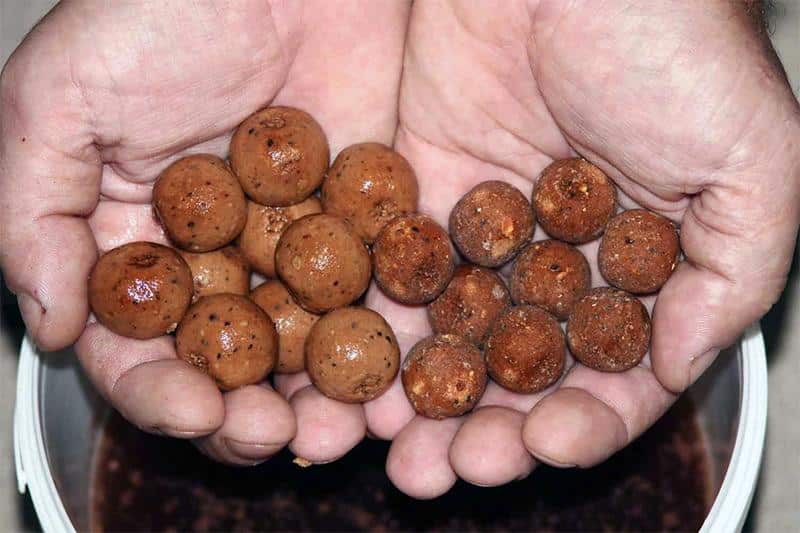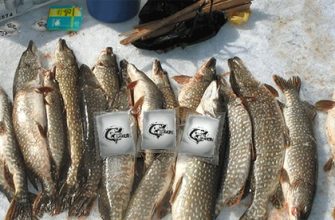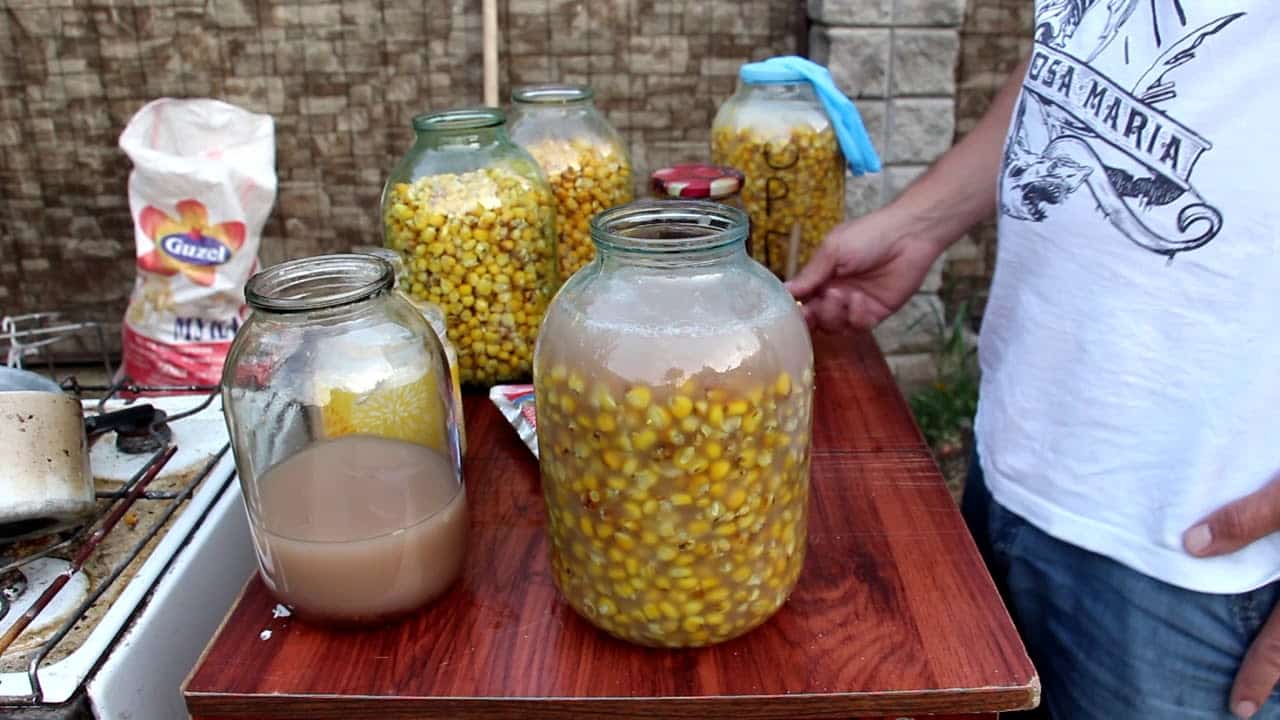Boilies
for catching carp ,
bream ,
crucian carp ,
silver carp ,
roach ,
carp and a number of other species of peaceful fish appeared about 30 years ago. But more and more fishermen, who were convinced of the effectiveness of this bait, but for whom the cost of purchased boilies bites, began to independently make boilies with their own hands. Carp fishing tackle manufacturers have responded to
this by organizing the sale of the required components to create fragrant balls.
- General information – what you need to know about boilies
- The main ingredients for cooking
- Attractants
- Dyes
- Boilie Rolling Tools
- Making boilies according to the season
- Summer
- Spring and Autumn
- Boilies for different types of fish
- For crucian carp
- Boiler building for bream
- How to make dusty, sinking, floating boilies
- Floating
- Sinking boilies
- Dusty
- How to store boilies at home
- Поделиться ссылкой:
General information – what you need to know about boilies
Boilies are used most often in
carp fishing and are used as bait and bait. The balls differ according to the diameter:
- mini-boilies – up to 10 mm;
- medium – 15-30 mm;
- large – more than 30 mm;
- bait – more than 50 mm.
Most often, hair montage is used for boilies. They are pierced with a special needle, and a loop on the hair is pulled through the ball to secure it with a stopper. The carp swallows the bait at the same time as the hook, so it is spotted.
- cylindrical and round;
- neutral, floating, sinking;
- insoluble and dusty.
The main ingredients for cooking
Homemade boilies can be made using various ingredients:
- ground cereals: wheat, corn, flax, barley, walnut, sesame, hemp;
- binders: gelatin, eggs, beet molasses, molasses;
- plasticizers: syrups, glycerin, honey.
- Supplements: lecithin, betaine.
Attractants
For the manufacture of boilies, various attractants are also required, as a rule, such smells are used for this: peach, cherry, vanilla, raspberry, plum, black pepper, caramel, garlic. You need to add them in moderation, since the very strong aroma will scare away carp, bream and other fish. Digestive activators are also used, which encourage the fish to eat constantly, speeding up its metabolism. To do this, use: special enzymes, seeds, fennel, dill.
Dyes
Balls that are visually attractive to fish can be made by adding dyes. The color of the bait is especially important when fishing in cold water, since the fish does not smell well at the same time, therefore it picks up food visually. Which dye is better to use – in this case, the opinions of the fishermen are ambiguous. Some say that fish only take red boilies, some argue that the color of the bait must be natural, and those who fish at night recommend choosing fluorescent balls.
Attention: The choice will depend on the specific pond and the preferences of the underwater inhabitants living here.
Dusty Boilies Recipe for Spring – DIY Video: https://youtu.be/DcyTuAyzVpg
Boilie Rolling Tools
Before making your own boilies for fishing, you will definitely need to acquire various devices. Today, manufacturers offer all the necessary equipment and tools. For boiler construction to be successful, you will need:
- separate container for mixing components;
- a spoon;
- strainer;
- enameled container;
- fork;
- microwave for drying floating baits;
- a towel for drying dusty boilies;
- colander for cooking sinking balls;
- board for making boilies ; The

- a table for rolling out dough sausages.
Tip: To simplify the rolling process, you can additionally buy a kneader and a syringe with attachments of different diameters for squeezing out the sausages from the prepared composition.
But the main tool that is required without fail is a board for making boilies. Moreover, it is relevant when rolling more balls.
Recommendation: Making boilies with your own hands is best done from a purchased ready-made composition. Here, in addition to the instructions for making a specific bait, there are all the required substances that you will not need to choose yourself and measure the necessary proportions. It remains only to pour water and knead the dough. You can also roll up boilies from this mixture on the pond itself.
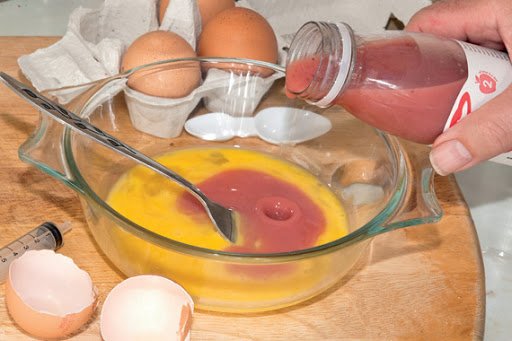
Making boilies according to the season
Different recipes differ according to the season and weather conditions. You can add anything to the dough, the more you experiment, the more effective the result. All anglers have their own secrets, but there are some recipes that are universal.
Summer
In summer, fish especially require food, which contains a lot of protein. At this time, carps feed on slugs, crustaceans, various larvae, insects. This must be taken into account before making boilies.
Recipe number 1 :
- 1 kg of flour from corn, rice and millet;
- dry cream – 700 grams;
- eggs – 12 pcs.;
- sunflower oil – 4 tablespoons;
- dye – 0.5 tbsp.
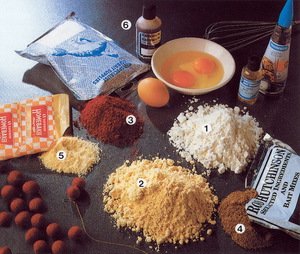
Knead the dough, cut the sausages, roll up the balls with a boilie board and cook in boiling water until they come up. Then they get out and dry thoroughly. Homemade boilies, which can be successfully used for catching carp, bream, carp in the summer,
recipe number 2 :
- millet and corn flour – 0.5 kg;
- casein – 200 gr;
- semolina – 250 gr;
- hemp – 150 gr;
- salt – 1 tsp;
- ground black pepper – 0.5 tsp;
- a small amount of sweet attractants.
Everything is mixed and prepared according to the above recipe.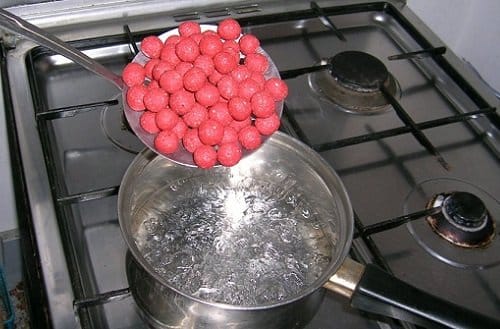
Spring and Autumn
Taking into account the cooling of the water, carp reacts well to fishy odors, so bone meal is often added to the dough. Recipe number 1:
- ground wheat and corn grains – 0.5 kg each;
- soy flour – 250 gr;
- semolina – 220 gr;
- eggs – 10 pcs.;
- ground hemp and sunflower seeds – 150 g each;
- salt, powdered sugar, fish oil, betaine – 1 tablespoon each;
- attractant with a crab smell – 10 ml;
- Konservit.
In a blender, all seeds are ground into powder. Then they are mixed, cereals are added to them. Beat the eggs and add the attractant to them, as well as the remaining ingredients. The dough is kneaded and balls roll out of it. Boilies are boiled for 3 minutes. For recipe number 2, you need to grind millet, hemp and flax seeds. Then you need fish and wheat flour (3 cups each), it is mixed with the powder prepared before. After the dough is kneaded, balls are made and boiled for 2 minutes.
Boilies for different types of fish
Most anglers make boilies for carp, but other peaceful fish also bite on these delicious balls.
For crucian carp
Not in every locality you can buy specialized boilies
for crucian carp . And they are quite expensive. Therefore, fishermen have found a universal way to prepare this bait. The simplest recipe looks like this:
- you will need 500 grams of white bread and cheese like “Friendship”;
- all components must be mixed before getting the dough;
- balls of the required diameter are molded from them;
- cooked boilies are fried in vegetable oil for 3 minutes;
- add oil to the prepared bait and put it in the refrigerator.
Boiler building for bream
The most popular are pea-based boilies. To make do-it-yourself boilies for bream, you need the following components:
- semolina – 100 gr;
- peas – 200 gr;
- corn oil – 1 tablespoon;
- egg – 1 pc.;
- glycerin – 0.5 tbsp;
- honey – 0.5 tsp
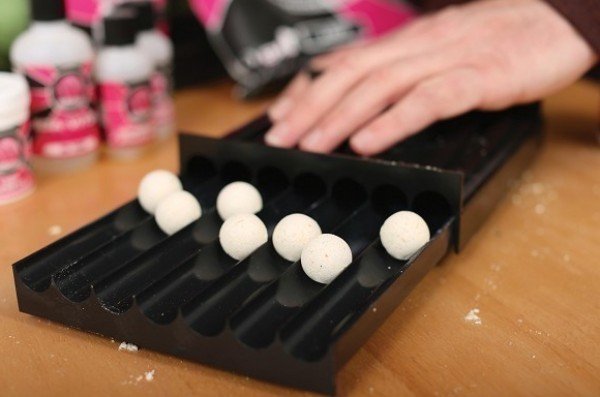
Peas must be finely chopped on a coffee grinder and added to semolina. In a separate container, you will need to beat the egg, glycerin, honey and butter. Then the liquid mixture is gradually added to the dry composition and mixed well. Homemade catch boilies – how to cook and how to use when fishing: https://youtu.be/zMeuVUpaaZo
How to make dusty, sinking, floating boilies
Boilies differ in terms of buoyancy and solubility. Sinkers are used for bait, and are also often chosen as bait for fishing on a hard bottom. Floating options – only for the nozzle, these boilies, as a rule, are planted simultaneously with the sinking balls, this is how the “snowman” tackle is obtained. Dust balls are considered universal.
Floating
At the bottom, where there is a lot of silt, or in areas overgrown with algae, floating boilies are most often used. This bait is the most conspicuous for carp fish. Also, these balls are useful when fishing in the summer, as the fish tries to escape to the surface in search of air. Floating baits are located at a certain distance from the “difficult” bottom, therefore, they are not so saturated with the smell of silt and retain their own aroma for a longer time.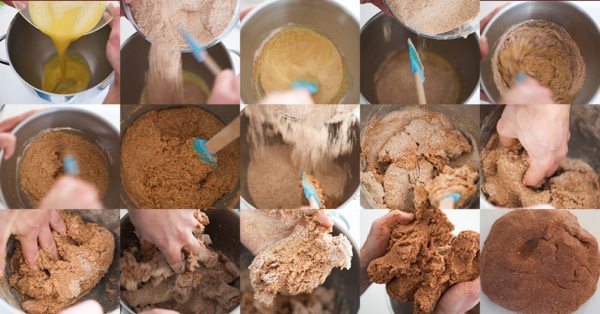
Attention: Since microwaves “take away” odors, more attractants should be added to the dough for these boilies. Large portions of casein will improve the buoyancy of the balls.
Tips for working with a microwave:
- It is necessary to clearly define and record for the future the required time for drying the balls, taking into account their diameter and composition. Why do you need to determine the moment when the first trial boilies are just starting to burn.
- To avoid charring the bait, the boilies need to be checked periodically: first after 60 seconds, then – once every 20 seconds. Until they’re fully cooked.
- The balls are cooked at maximum power, so the water evaporates from them much faster.
You can find out about the readiness of the nozzle by placing it in a container with water. If, after sinking to the bottom, the boilie slowly begins to emerge – it is done correctly.
We roll boilies with yeast with our own hands – video recipe for making: https://youtu.be/aReYieOMnKk You can use the following boilies recipe:
- flour from corn, rice, wheat;
- ground bird feed;
- dry cream.
Everything needs to be mixed in an amount of 100 grams. Excellent boilies for fishing for carp, crucian carp, bream will be obtained if you use the following components:
- bone meal – 250 gr;
- millet flour – 250 gr;
- bran – 120 gr;
- rice flour – 170 gr;
- wheat – 120 gr;
- fish oil – 250 gr;
- betaine – 20 g;
- cream – 150 gr.
DIY floating boilies, recipes available for making at home – video of the cooking process from start to finish: https://youtu.be/DbPDBa58nvQ
Sinking boilies
Drowning boilies are heat-treated by freezing or boiling. To make high-quality bait that retains its shape in water for a long time, it is necessary to use different processing methods in stages:
- cooking;
- microwave drying;
- freezing.
Regarding the features of recipes for sinking balls, the following recommendations should be followed:
- you need to roll not very large balls (about 15 mm);
- it is required to increase the amount of dye and attractant;
- A high amount of bran in the mixture will help speed up the absorption of water into the bait.
Sinking Boyle:
- food for cats or dogs – 150 gr;
- wheat flour – 0.5 kg;
- fish oil – 250 gr;
- rice flour – 150 gr;
- wheat – 120 gr;
- bran – 120 gr;
- betaine – 20 g;
- salt – 1 tsp;
- dry cream – 50 gr.
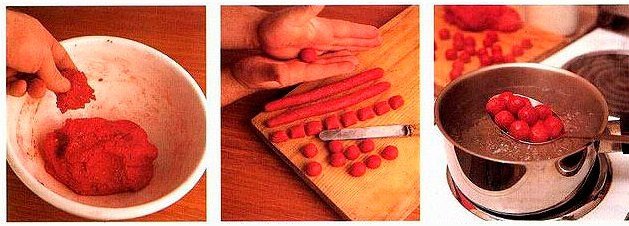
This is the basic composition.
Dusty
A feature of the manufacture of dusting balls is that they do not require heat treatment. Raw boilies only need to be dried. Gradually collapsing at the bottom, the bait transfers its aromatic substances. Near the hook there is a cloud of turbidity from ingredients attractive to crucian carp, bream, carp, carp. To create dusty boilies with your own hands, kneading the dough must be done not on eggs, but on components that dissolve in water – molasses or honey. Dusty Boilies Recipe:
- buckwheat – 150 gr;
- hemp seeds – 70 g each;
- molasses – 70 gr;
- semolina – 35 gr;
- white flour – 50 gr.
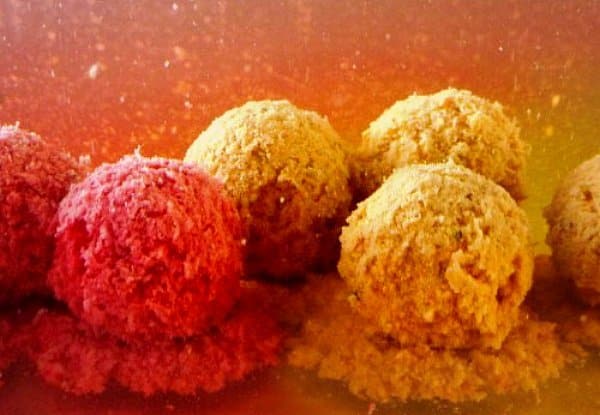
To make the smell more pronounced, the seeds and buckwheat should be slightly fried. Dip the prepared boilies in the previously left part of the liquid and dry for about a day.
How to store boilies at home
Purchased boilies can be stored in the refrigerator for up to 5 years. This is possible due to the addition of various preservatives. When making boilies with your own hands, they are immediately after cooling from boiling ready for use as bait. Such balls are still soft, and drying them for a long time will only make them harder. If it was decided to go fishing after a while, then the boilies are best stored in the freezer. How to keep boilies at home: https://youtu.be/-P_rx8AIBXA Well-chosen recipes for making boilies at home are a guarantee of successful fishing for this fish. Choose from different options with all sorts of additives and smells, this is the only way you can get the best bait for a particular body of water and season.
